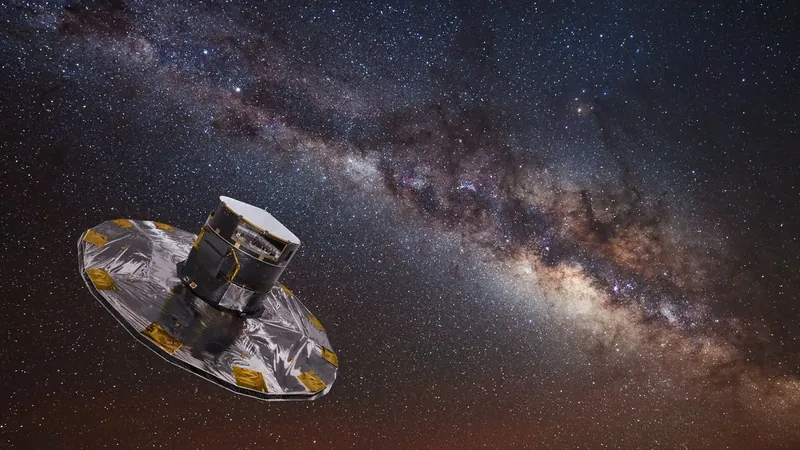
Milky Way's Mapping Marvel: Gaia Telescope Bids Farewell After 11 Groundbreaking Years
2025-04-02
Author: Wei
On March 27, scientists officially said goodbye to the Gaia telescope, summing up an astonishing 11-year mission that revolutionized our understanding of the Milky Way and its cosmic surroundings.
Despite lacking the celebrity status of its counterparts like the Hubble or James Webb space telescopes, the Gaia mission, operated by the European Space Agency (ESA), has proven to be a transformative force in astronomy. Since its launch in December 2013, Gaia has charted an astonishing 2 billion stars, over 4 million potential galaxies, and about 150,000 asteroids, unlocking mysteries within our galaxy like never before.
Gaia's data has led to a staggering 13,000 scientific publications, and that number is expected to grow exponentially in the coming years. Johannes Sahlmann, project scientist at ESA, described Gaia's data as a 'unique treasure trove for astrophysical research' that continues to influence various disciplines within astronomy.
The Pinnacle of Precision in Stellar Mapping
Positioned at Lagrange Point 2, approximately 1 million miles (1.6 million kilometers) from Earth, Gaia employed a pair of telescopes that meticulously measured the distances and movements of stars, ultimately creating the largest and most accurate 3D map of the Milky Way. With its advanced instruments, Gaia has provided crucial insights into our galaxy’s structure, revealing its prominent spiral arms and the enigmatic dark matter halo that envelops it.
One of the most eye-opening revelations from Gaia's data is that star formation in the Milky Way began less than 1 billion years after the Big Bang. This finding significantly revises previous estimates, which suggested that star formation didn't commence until about 3 billion years after the universe's inception.
Moreover, Gaia has excavated cosmic secrets like the discovery of the Radcliffe Wave—a colossal stellar formation extending 9,000 light-years and potentially influencing Earth’s climate.
A Legacy Beyond Its Lifespan
Gaia’s mission ended due to fuel depletion after operating nearly twice its intended lifespan. To ensure a permanent end to the spacecraft's mission, ESA commanded it into a 'retirement orbit,' carefully distancing it from critical scientific orbits such as that of the James Webb Space Telescope.
The retirement process involved a full decommissioning strategy, implemented to prevent Gaia from accidentally reactivating in the future. This included intentional corruption of its onboard software—a decisive farewell gesture to a mission that has transformed astronomical research.
Despite its deactivation, Gaia's impact remains vast. The telescope has gathered over 1 petabyte (1 million gigabytes) of data, and thus far, only about one-third of this massive dataset has been thoroughly analyzed. The next significant data release is scheduled for 2026, marking the continuation of Gaia’s influence over the coming years, with the final release expected to be available in 2030.
In the grand tapestry of scientific exploration, Gaia has undoubtedly earned its title as the 'discovery machine of the decade.' The wealth of information it has produced promises to illuminate the mysteries of our cosmos for generations to come, ensuring that its legacy as a pioneer in astronomical research will be remembered long after its instruments have gone silent.


 Brasil (PT)
Brasil (PT)
 Canada (EN)
Canada (EN)
 Chile (ES)
Chile (ES)
 Česko (CS)
Česko (CS)
 대한민국 (KO)
대한민국 (KO)
 España (ES)
España (ES)
 France (FR)
France (FR)
 Hong Kong (EN)
Hong Kong (EN)
 Italia (IT)
Italia (IT)
 日本 (JA)
日本 (JA)
 Magyarország (HU)
Magyarország (HU)
 Norge (NO)
Norge (NO)
 Polska (PL)
Polska (PL)
 Schweiz (DE)
Schweiz (DE)
 Singapore (EN)
Singapore (EN)
 Sverige (SV)
Sverige (SV)
 Suomi (FI)
Suomi (FI)
 Türkiye (TR)
Türkiye (TR)
 الإمارات العربية المتحدة (AR)
الإمارات العربية المتحدة (AR)